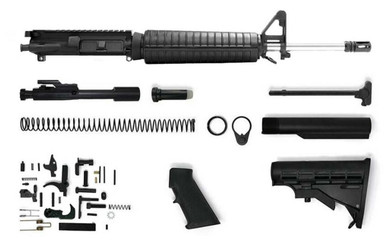What's An AR Build Kit?
Posted by Gunbuilders.com on Nov 23rd 2022
Building an AR-15 piece by piece is something a lot of new rifle owners choose to do. But for others, picking out every individual part for their upper and lower receivers just isn't in their wheelhouse. That's perfectly OK. That's why AR build kits exist! Let's talk about 'em.
AR Build Kit FAQs
Q: What is an AR build kit?
A: A build kit is collection of parts, minus the stripped lower receiver, that provides everything needed to assemble a custom AR-15 in a particular caliber and configuration.
Q: Why aren't stripped lowers included in build kits?
A: The stripped lower receiver is the only part of the AR-15 considered a firearm under federal law. By not including one, build kits can't be made to function as a working firearm. That's why build kits can be sold without you having to deal with expensive FFL transfers and the ATF's bureaucratic paperwork.
Q: What's the advantage of a build kit?
A: Build kits include pre-assembled upper receivers with the barrel and gas system installed. This saves you a lot of time and tool costs. There's no need to buy an Armorer's wrench, torque wrench, barrel nut adapter, receiver vise, or action rod. All those tools are typically required if you build your AR-15's upper piece by piece.
And build kits include the parts needed to assemble the stripped lower receiver that you'll purchase elsewhere, or fabricate yourself using an 80% lower and jig.
Q: How do I know which build kit to buy?
A: Build kits are categorized by caliber and barrel length. So, for example, if you wanted to build a typical 16" rifle chambered in 5.56 NATO or .223 Remington, you would want to check out regular ole' AR-15 Rifle Kits. Say you wanted a 9mm AR pistol. You'd need to look at AR9 Pistol Kits.
Q: How do I know which stripped lower to use with my kit?
A: The AR platform only uses three types of stripped lowers: The 5.56/.223 receiver, the .308 receiver, and the 9mm receiver. All available calibers fit into either of these three lower receivers.
Q: What's the difference between a rifle and pistol AR kit?
A: Both kits provide the same components, just in different sizes. Rifle kits include a barrel measuring at least 16", and a buttstock. Pistol kits provide a barrel less than 16" and no buttstock. That's because installing a stock on a firearm with a barrel less than 16" in length constitutes making a short-barreled rifle. Making an SBR without an NFA tax stamp is illegal.
AR Kits: What's Included
No matter the caliber or configuration, every AR rifle and pistol kit includes the components described below. The only exception is 9mm. The AR9 kit doesn't need a gas block or gas tube, as 9mm is operated by blow-back instead of gas impingement.
Pre-Built, Barreled Upper

Like we said, getting an assembled upper is one of the biggest advantages of using a build kit to assemble your custom AR. If you decided to build your upper assembly, it would look something like this:
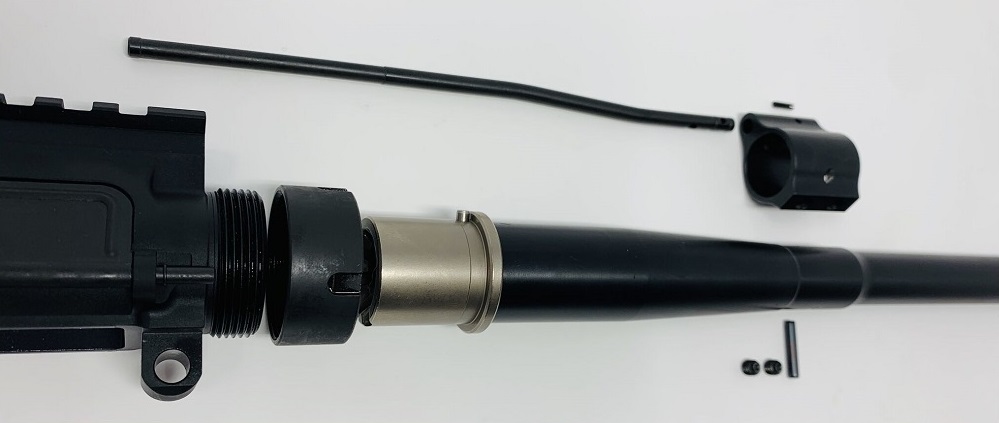
There are pros and cons to building your upper like this. You can pick out each part. But that can also be the drawback. Figuring out parts compatibility can be a pain, especially when it comes to making sure your gas block, barrel's gas port, handguard, and barrel nut all fit together.
When you buy a kit, everything is guaranteed to work. Barreled uppers are ready to fire out of the box -- they just need to be installed on your finished lower assembly. Let's talk about that.
Lower Parts Kit
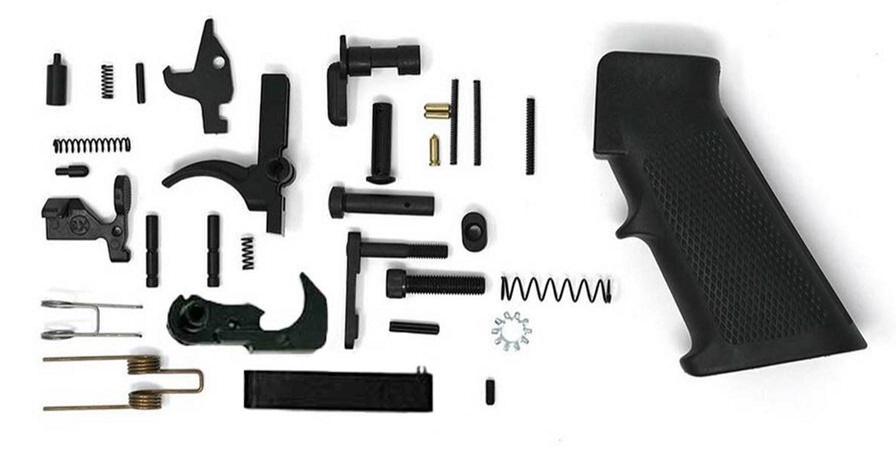
Even with a build kit, there's still assembly to be done with the lower parts kit, or "LPK". You'll need to install the hammer, trigger, sear, disconnector, springs, and pins in your stripped lower receiver to make it functional. But once again, the AR build kit guarantees that your LPK will be compatible with your selected caliber and configuration.
This guide covers the install steps and tools needed.
Buffer Assembly

The buffer assembly provides the rest of the parts needed to complete your stripped lower receiver. Without it, your AR's bolt carrier group can't function in the upper receiver. Build kits ensure your buffer components -- especially the length of the buffer tube, and the weight of the recoil buffer itself -- are, again, compatible with your upper receiver and the caliber it chambers.
Building an AR piece by piece can mean that you could wind up with a buffer that's too light, or too heavy. This will result in your AR running with too much felt recoil, or it won't reliably cycle ammunition.
Types of AR Build Kits
5.56/.223 Receiver-Based Kit
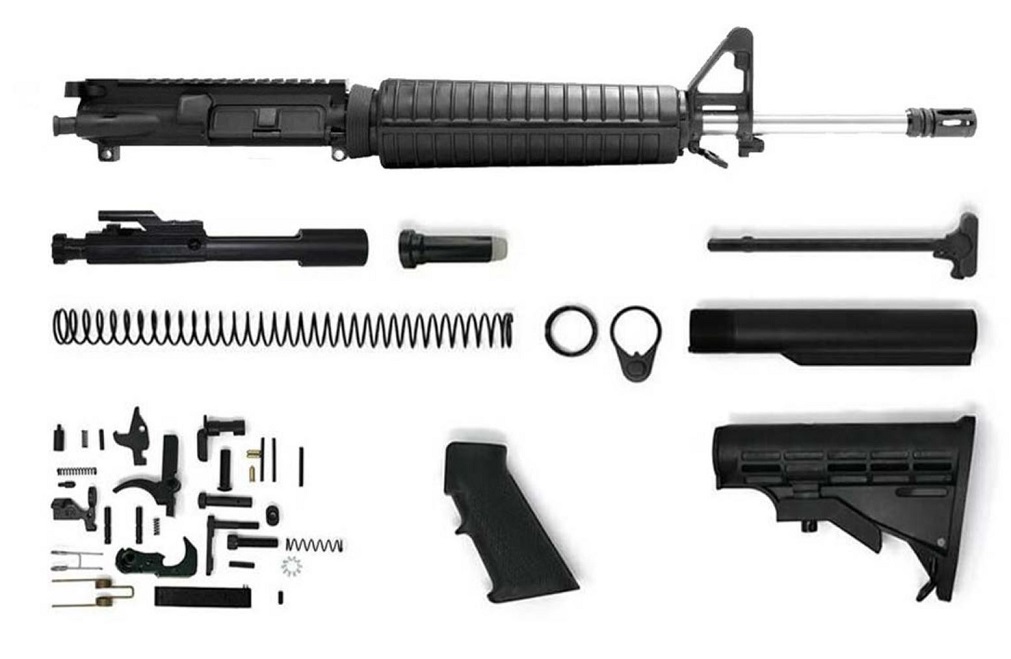
These are the most common AR build kits. The original 5.56/.223 upper and lower receivers chamber most calibers that are available for the AR platform.
Available calibers include, but are not limited to:
- .224 Valkyrie
- 300 Blackout
- .350 Legend
- .50 Beowulf
- 6mm ARC
- 6.5 Grendel
- 6.8 SPC
Pistol kits are favored for calibers like 5.56 and 300 BLK, while rifle kits tend to favor rounds designed for accuracy, like most 6mm and 6.5mm cartridges.
.308 Receiver-Based Kit
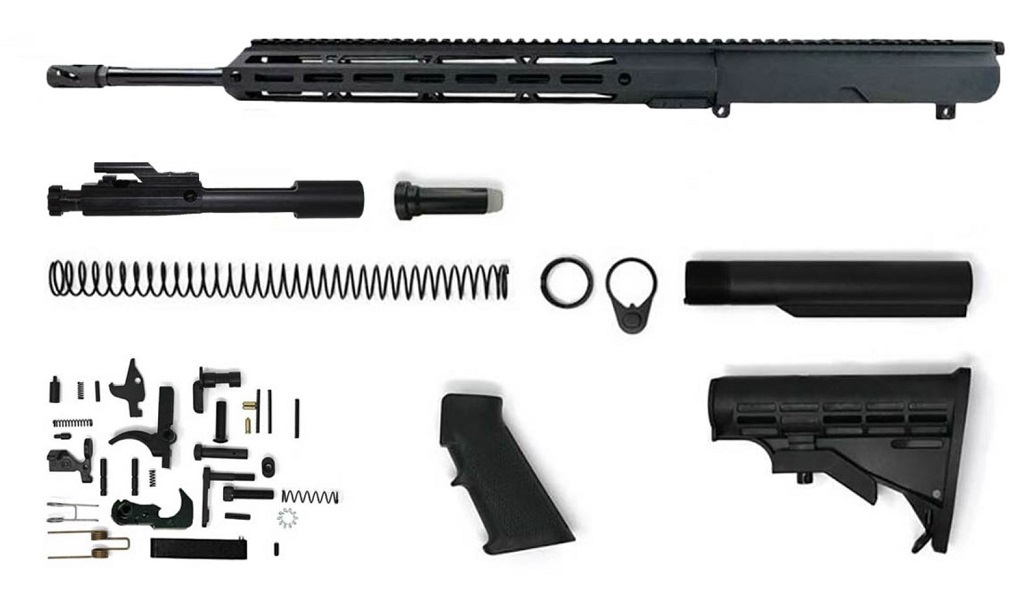
The .308 AR receiver chambers larger long-range calibers. For this reason, it's virtually never configured to function as an AR pistol. Although often called an "AR-10," the modern .308 AR and its rifle kits are based on the DPMS LR-308 rifle.
Available calibers include, but are not limited to:
- .308 Winchester
- .243 Winchester
- 6.5 Creedmoor
- .338 Federal
- .300 Win Mag
9mm Receiver-Based Kit
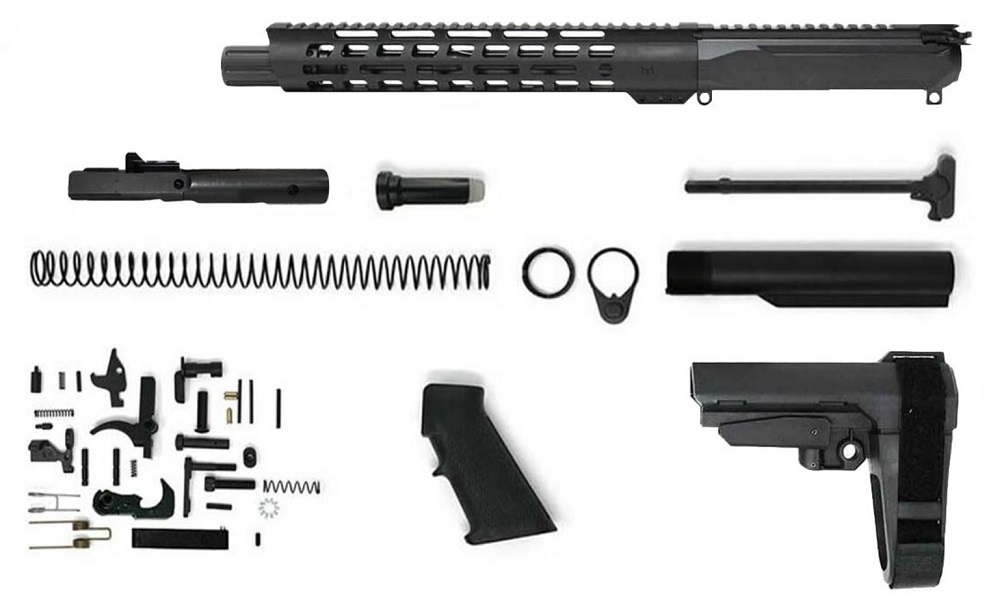
The 9mm-based AR platform is almost always configured as a pistol. That's because the 9mm cartridge uses fast-burning powder, and maximizes its velocity in short barrels (5" to 9" is common). The AR9 kit includes modified AR-15 components, like a one-piece bolt carrier group with no gas key. It also lacks a gas block and tube.
Ready to Build? Read More
Now that you've got a basic understanding of how AR build kits work, it's time to learn more about the AR configuration you want to build. Check out these caliber-specific guides:
DISCLAIMER: If you are new to the world of DIY gun building, you likely have a lot of questions and rightfully so. It’s an area that has a lot of questions that, without the correct answers, could have some serious implications. At GunBuilders.com, we are by no means providing this content on our website to serve as legal advice or legal counsel. We encourage each and every builder to perform their own research around their respective State laws as well as educating themselves on the Federal laws. When performing your own research, please be sure that you are getting your information from a reliable source.

